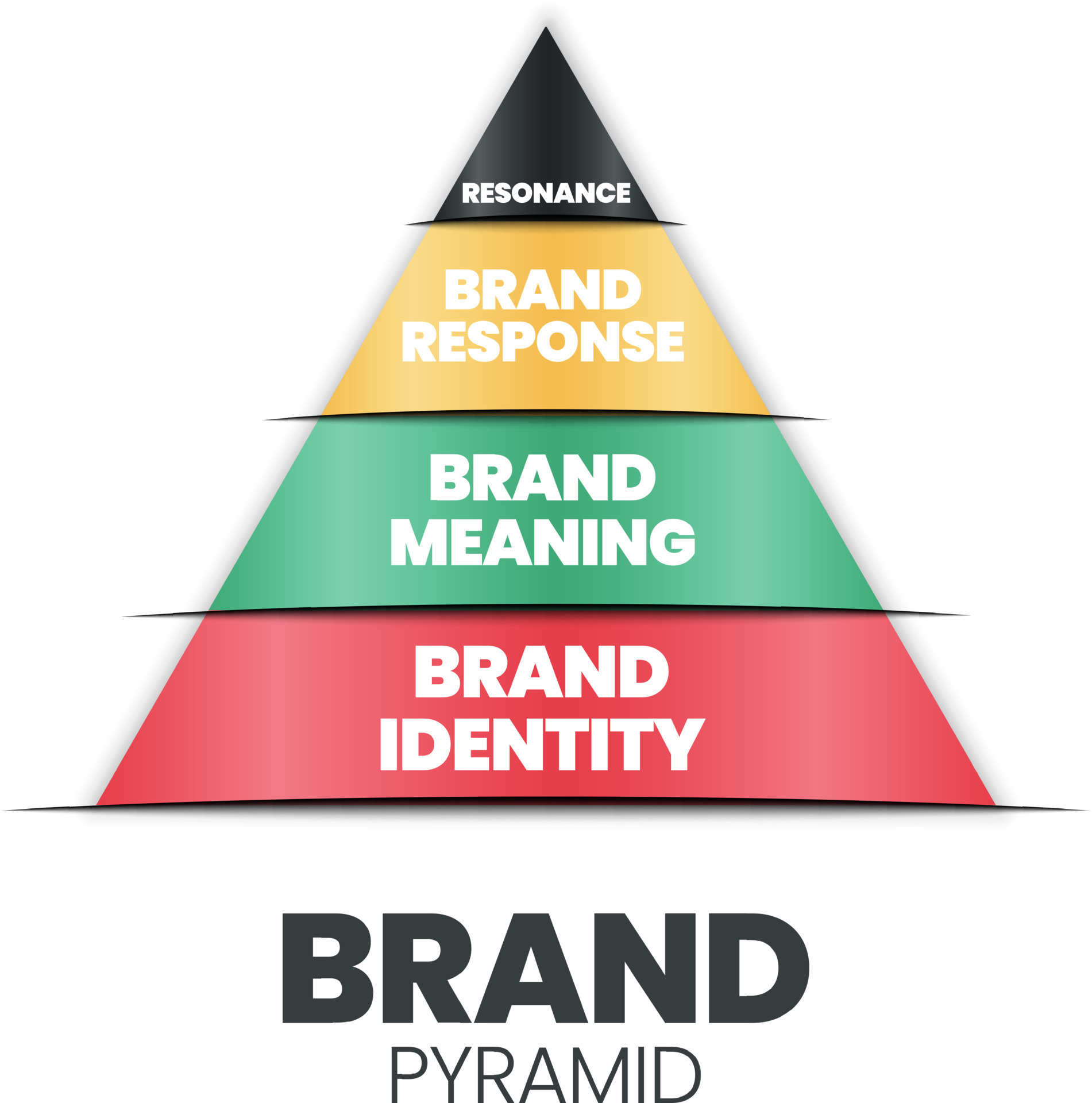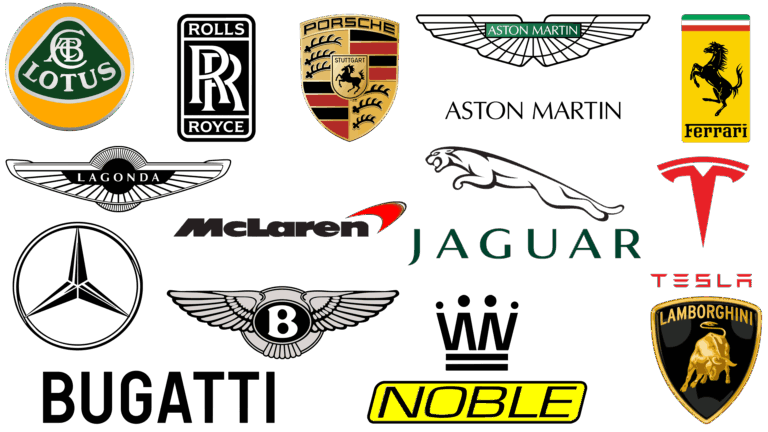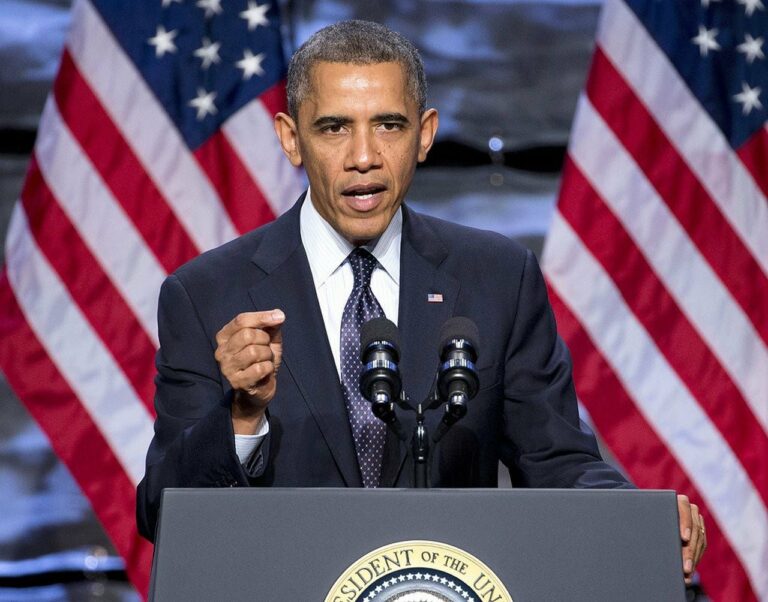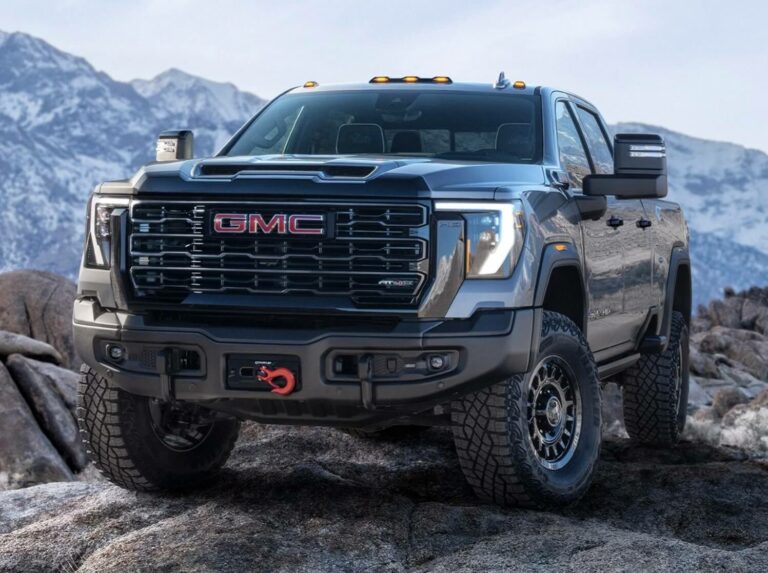Brand New Car Specials: Your Comprehensive Guide to Driving Home a Deal
Brand New Car Specials: Your Comprehensive Guide to Driving Home a Deal cars.truckstrend.com
The allure of a brand-new car is undeniable: the pristine interior, the distinctive new car smell, the latest technology, and the promise of trouble-free miles. However, the sticker price can often be a significant hurdle. This is where Brand New Car Specials come into play. Far from being mere discounts, these specials are a dynamic and diverse range of incentives offered by manufacturers and dealerships designed to make the dream of owning a new vehicle a more attainable reality. Understanding these specials is not just about saving money; it’s about making an informed decision that aligns with your financial goals and driving needs.
In essence, Brand New Car Specials encompass a wide array of financial incentives, promotional offers, and unique buying opportunities that reduce the overall cost or make the payment structure of a new vehicle more attractive. They are a crucial element of the automotive market, constantly evolving based on inventory levels, sales targets, economic conditions, and consumer demand. For the savvy shopper, navigating these specials can unlock significant savings and a more satisfying purchase experience.
Brand New Car Specials: Your Comprehensive Guide to Driving Home a Deal
What Exactly Are Brand New Car Specials? A Deep Dive into Types
Brand New Car Specials are not a monolithic concept; they come in various forms, each designed to appeal to different types of buyers and financial situations. Understanding these categories is the first step toward identifying the special that’s right for you.
- Cash Rebates (Customer Cash/Bonus Cash): This is perhaps the most straightforward special. A cash rebate is a direct reduction in the vehicle’s purchase price, offered by the manufacturer. It’s money back in your pocket, either applied to the down payment or sent to you after the purchase. For example, a $2,000 cash rebate means you pay $2,000 less for the car.
- Low-APR Financing Offers: For buyers who plan to finance their purchase, low Annual Percentage Rate (APR) offers can be incredibly valuable. Manufacturers often subsidize interest rates, offering rates as low as 0% or 0.9% for qualified buyers over terms like 36, 48, or even 60 months. This can save thousands of dollars in interest payments compared to standard bank rates.
- Lease Deals: Leasing allows you to drive a new car for a set period (typically 24-48 months) and mileage limit, with lower monthly payments than buying. Specials often include reduced monthly payments, lower down payments, or waived acquisition fees, making it an attractive option for those who enjoy driving a new car every few years.
- Loyalty and Conquest Programs:
- Loyalty Programs: Incentives offered to current owners of a specific brand to encourage them to purchase or lease another vehicle from the same manufacturer.
- Conquest Programs: Incentives designed to entice customers away from a competing brand, often requiring proof of ownership of a competitor’s vehicle.

- Military, Student, and First Responder Discounts: Many manufacturers offer special pricing or rebates for active military personnel, veterans, recent college graduates, and first responders as a gesture of appreciation. These can often be combined with other general incentives.
- Trade-in Assistance Bonus: Sometimes, manufacturers or dealerships offer an additional bonus on top of your vehicle’s trade-in value if you purchase a new car from them. This effectively increases your equity or reduces the new car’s price.
- Package Deals/Trim Level Discounts: Special pricing might be offered on specific trim levels or when purchasing certain option packages, encouraging buyers to upgrade to a higher-spec vehicle at a reduced premium.
- Holiday and Seasonal Sales Events: Major holidays (e.g., Memorial Day, Fourth of July, Labor Day, Black Friday, Year-End) are prime times for special promotions as dealerships aim to meet sales quotas and clear out inventory.
The Benefits of Buying New with Specials
Leveraging Brand New Car Specials offers a multitude of advantages beyond just the immediate financial savings:
- Significant Cost Savings: The most obvious benefit. Whether it’s a direct rebate, reduced interest, or a lower lease payment, specials genuinely cut down the total cost of ownership or the monthly outlay.
- Access to Latest Technology & Safety Features: New cars come equipped with the most current infotainment systems, driver-assistance technologies, and safety innovations, enhancing your driving experience and security.
- Full Manufacturer’s Warranty: A new car comes with a comprehensive factory warranty, providing peace of mind against unexpected repairs for a specified period or mileage. This is a substantial financial protection.
- Customization Options: When buying new, you often have the opportunity to choose specific colors, trim levels, and optional packages directly from the factory or dealer inventory, tailoring the vehicle to your preferences.
- Fuel Efficiency and Environmental Benefits: Newer models often feature more efficient engines and advanced hybrid or electric powertrains, leading to lower fuel costs and reduced environmental impact.
- Pride of Ownership: There’s an undeniable satisfaction in being the first owner of a vehicle, knowing its complete history from day one.
- Favorable Financing Terms: Specials often include access to much lower interest rates than you’d typically find on the used car market, leading to substantial savings over the life of the loan.
Navigating the Market: How to Find and Evaluate Specials
Finding the best Brand New Car Specials requires diligence, research, and strategic timing.
- Start Your Research Online:
- Manufacturer Websites: Always check the official websites of the brands you’re interested in. They typically list current national and regional incentives directly on their "Offers & Incentives" or "Specials" pages.
- Dealership Websites: Local dealerships will often advertise their specific specials, which might combine manufacturer incentives with their own dealer-specific discounts.
- Third-Party Automotive Sites: Websites like Edmunds, Kelley Blue Book (KBB), TrueCar, and CarGurus aggregate current incentives and can help you compare offers across different brands and models. They also often provide pricing insights and user reviews.
- Understand the Timing:
- End of the Month/Quarter/Year: Dealerships are often under pressure to meet sales quotas by the end of these periods, making them more receptive to negotiation and more likely to offer aggressive specials.
- Model Year Changeovers: When new model years are released (often in late summer or fall), dealerships are keen to clear out the previous year’s inventory, leading to significant discounts on outgoing models.
- Holiday Sales Events: As mentioned, major holidays are reliable times for special promotions.
- Read the Fine Print Carefully: Every special comes with terms and conditions. Pay close attention to:
- Eligibility Requirements: Do you qualify for the special (e.g., credit score, residency, existing ownership of a specific brand)?
- Expiration Dates: Specials are time-sensitive. Don’t miss out by waiting too long.
- Combinability: Can the special be combined with other offers (e.g., can a cash rebate be stacked with a low APR offer)? Sometimes choosing one means forfeiting the other.
- Specific Trims/Models: Specials often apply only to certain trims or configurations, not the entire model line-up.
- Get Multiple Quotes: Once you’ve identified a vehicle, contact several dealerships (at least 3-5) to compare their offers. Use the best quote as leverage for negotiation with other dealers.
- Test Drive and Pre-Approval: Before finalizing, test drive the car to ensure it meets your needs. Also, consider getting pre-approved for a loan from your bank or credit union. This gives you a baseline interest rate to compare against the dealer’s financing offers and strengthens your negotiating position.
Key Considerations Before Diving In
While Brand New Car Specials are enticing, a thoughtful approach is crucial.
- Your Budget: Determine your absolute maximum budget, including not just the purchase price but also insurance, registration, maintenance, and fuel. A special might make a car seem affordable monthly, but consider the total cost of ownership.
- Needs vs. Wants: Don’t let a compelling special sway you into buying a car that doesn’t genuinely fit your lifestyle or needs. A great deal on an SUV is not a deal if you really need a compact sedan.
- Credit Score: Low APR financing offers are typically reserved for buyers with excellent credit (e.g., 720+ FICO score). Understand your credit standing before expecting to qualify for the very best rates.
- Trade-in Value: Research your current car’s trade-in value using resources like KBB or Edmunds. Negotiate the trade-in separately from the new car price to ensure you’re getting a fair deal on both.
- Total Cost of Ownership: Factor in depreciation, insurance costs (which are often higher for new cars), maintenance, and fuel. A low purchase price doesn’t always equate to the lowest long-term cost.
- Hidden Fees: Be wary of excessive dealer fees. Common fees include documentation fees, registration, and taxes. Question anything that seems unusually high or unclear.
Tips for Maximizing Your Savings
- Negotiate Beyond the Special: A special is just the starting point. The dealer still has room to negotiate on the MSRP (Manufacturer’s Suggested Retail Price) even with incentives applied.
- Separate Negotiations: Always negotiate the vehicle price, your trade-in value, and financing terms as separate transactions. This prevents dealers from shifting money around to make one aspect look better while shortchanging you on another.
- Be Prepared to Walk Away: Your strongest negotiating tool is your willingness to walk away if the deal isn’t right.
- Consider Outgoing Models: As mentioned, buying a vehicle from the outgoing model year can yield substantial savings as dealers want to make way for new inventory. The differences between model years are often minor.
- Don’t Fall for Payment-Focused Negotiations: Dealers often try to focus solely on the monthly payment. Insist on negotiating the total price of the car first, then discuss financing or lease terms. A low monthly payment might hide a longer loan term or a higher overall price.
- Beware of Unnecessary Add-ons: Resist high-pressure sales tactics for extended warranties, paint protection, fabric protection, or VIN etching. Research these separately and decide if they’re truly worth it for you.
Common Pitfalls and How to Avoid Them
- Focusing Only on the Monthly Payment: This is a classic trap. A low monthly payment can be achieved by extending the loan term significantly, leading to more interest paid overall. Always look at the total price.
- Not Comparing Offers: Relying on the first dealer’s offer is a mistake. Always get multiple quotes.
- Ignoring the Fine Print: Misunderstanding the terms of a special can lead to disappointment or unexpected costs.
- Lack of Pre-Approval: Walking into a dealership without a pre-approved loan leaves you vulnerable to potentially higher interest rates offered by the dealer’s finance department.
- Emotional Buying: Don’t let the excitement of a new car override your logical decision-making. Stick to your budget and research.
- Being Undermined by Your Trade-in: If you don’t research your trade-in’s value, you might get less than it’s worth, effectively negating any special you received on the new car.
Illustrative Table: Brand New Car Specials & Potential Impact
This table provides hypothetical examples of how various Brand New Car Specials can impact your purchase. Actual savings will vary based on manufacturer, model, region, and eligibility.
| Type of Special | Description | Potential Savings/Benefit | Notes |
|---|---|---|---|
| Cash Rebate | Direct reduction from the MSRP, paid by the manufacturer. | $1,500 – $5,000+ | Reduces the initial purchase price directly. Can often be combined with other offers. |
| Low APR Financing | Manufacturer-subsidized interest rates for qualified buyers. | 0% – 2.9% for 36-72 months (vs. 6-8% market rate) | Saves thousands in interest over the loan term. Requires excellent credit. |
| Lease Deal | Reduced monthly payments or low/no down payment for a lease. | $100 – $250+ lower monthly payment than financing | Lower upfront cost, fixed term, no ownership at the end. Mileage limits apply. |
| Loyalty Bonus | Incentive for existing owners of the same brand. | $500 – $2,000+ | Encourages repeat business. Often stackable with other incentives. |
| Conquest Offer | Incentive for buyers switching from a competitor’s brand. | $500 – $1,500+ | Aims to attract new customers to the brand. Proof of competitive ownership required. |
| Military/Student/First Responder Discount | Special offers for eligible groups. | $500 – $1,000+ | Proof of eligibility required. Often combinable with other offers. |
| Trade-in Assistance Bonus | Extra amount added to your vehicle’s trade-in value when buying new. | $500 – $1,000+ | Increases your equity or lowers the new car’s price. |
| Package Discount | Reduced price for specific option packages or higher trim levels. | Varies, often several hundred to a few thousand dollars | Encourages buyers to opt for more features at a lower premium. |
| Year-End/Model Clear-out | Significant discounts on outgoing model years to make way for new inventory. | 5% – 15%+ off MSRP (or larger rebates/better APRs) | Best for buyers who don’t need the absolute latest model year. |
Frequently Asked Questions (FAQ)
Q1: Are Brand New Car Specials always better than buying used?
A1: Not always. While specials can make new cars very competitive, a well-maintained used car that has already taken its biggest depreciation hit can still be a better value for some. It depends on your budget, how long you plan to keep the car, and your tolerance for potential maintenance. Specials bridge the gap, making new cars a more viable alternative.
Q2: When is the best time to find Brand New Car Specials?
A2: Generally, the end of the month, quarter, and especially the end of the year (November/December) are excellent times. Also, look out for major holiday sales events and when new model years are being introduced (often late summer/fall), as dealers want to clear out older inventory.
Q3: Can I combine multiple Brand New Car Specials?
A3: Sometimes, but not always. Manufacturer cash rebates can often be combined with dealer discounts. However, you typically have to choose between a low APR financing offer and a cash rebate, as they are both manufacturer incentives. Always ask the dealer and read the fine print about combinability.
Q4: What’s the difference between a rebate and a discount?
A4: A rebate is a direct incentive from the manufacturer, reducing the price or given as cash back. A discount is a reduction in price offered by the dealership, often from their profit margin. You can often get both on the same vehicle.
Q5: How does my credit score affect my eligibility for specials?
A5: Your credit score significantly impacts your eligibility for low APR financing offers. These are typically reserved for buyers with excellent credit (e.g., FICO scores in the mid-700s and above). Other specials like cash rebates or loyalty bonuses usually don’t have credit score requirements.
Q6: Are "zero down" lease deals truly zero down?
A6: "Zero down" usually means no capitalized cost reduction (money down on the car itself). However, you will still typically owe the first month’s payment, security deposit (refundable), and various fees (acquisition fee, tag/title, taxes) at signing. Always clarify what "zero down" specifically includes or excludes.
Q7: Should I tell the dealer I have a trade-in upfront?
A7: It’s generally advised to negotiate the price of the new car first, then discuss your trade-in as a separate transaction. This prevents the dealer from inflating your trade-in value while simultaneously inflating the new car’s price or reducing your discount.
Conclusion
Brand New Car Specials are a powerful tool for making your next vehicle purchase more affordable and enjoyable. They are a dynamic force in the automotive market, offering a spectrum of financial incentives that cater to diverse buyer needs. By understanding the different types of specials, knowing how to research and evaluate them, and approaching the buying process with practical strategies, you can unlock significant savings. Remember, patience, thorough research, and a willingness to negotiate are your best allies. With the right approach, driving home in a brand-new car doesn’t have to be a distant dream but an exciting and financially savvy reality.





